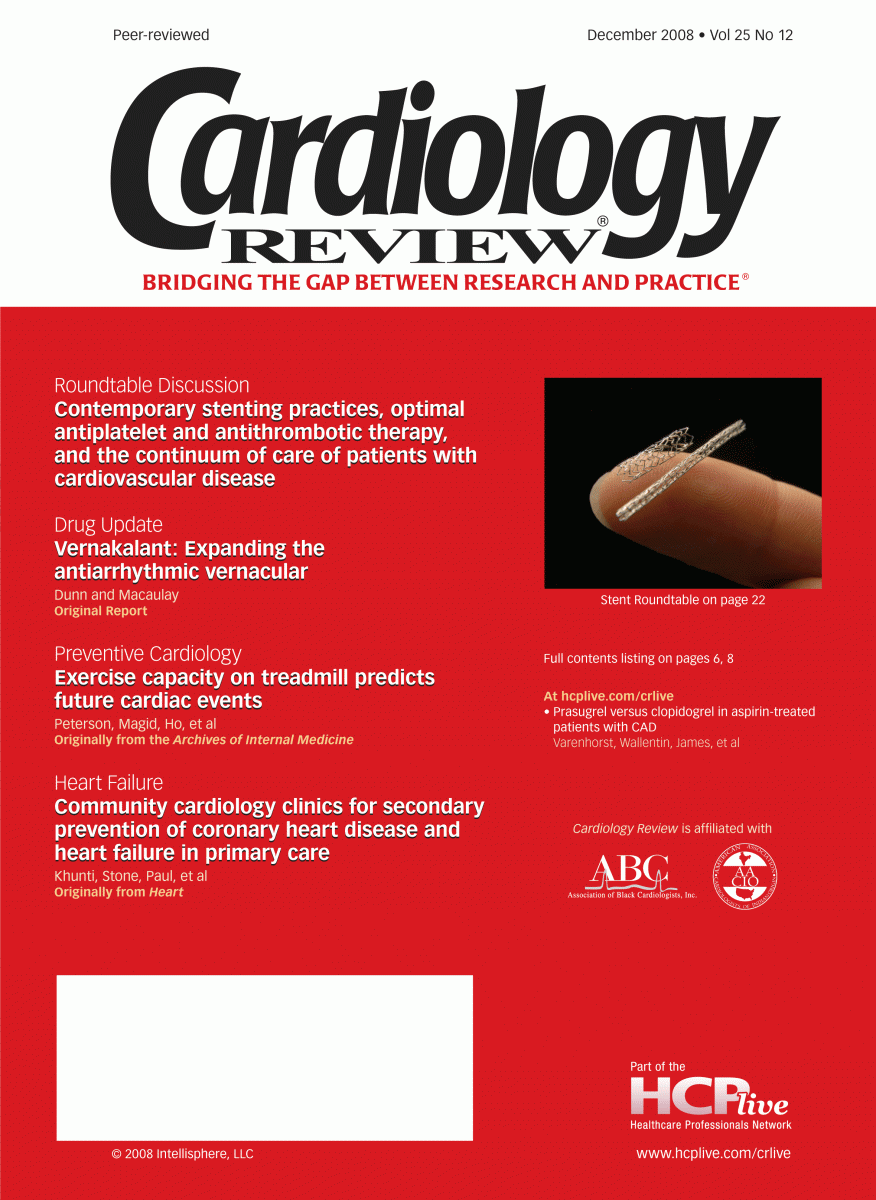Exercise capacity and cardiovascular risk: Study provides clinicians with important insights
A study by Peterson and colleagues used a large electronic patient database to demonstrate how patients at risk for nonfatal coronary events may be identified using reduced exercise capacity on treadmill stress testing as a parameter.
A study by Peterson and colleagues used a large electronic patient database to demonstrate how patients at risk for nonfatal coronary events may be identified using reduced exercise capacity on treadmill stress testing as a parameter.1 As the authors discuss, decreased exercise capacity has been well established as an indication of increased total mortality.2 The contribution of Peterson and colleagues’ report for clinicians is that it raises awareness of the significance of reduced exercise capacity for predicting nonfatal coronary events.1 Studies such as this effectively demonstrate the value of efficient access to a large community electronic clinical database to answer questions of practical value, both in assessing a specific local problem and to obtain information of value for clinical medicine in general.
Cardiology has traditionally had a crisis orientation directed at the management of coronary heart disease (CHD) emergencies. Several key, conclusive, and clinically meaningful studies with statins, however, such as 4S (Scandinavian Simvastatin Survival Study)3 and PROVE-IT (Pravastatin or Atorvastatin Evaluation and Infection Therapy),4 have resulted in many clinical cardiologists joining the prevention bandwagon as an important part of their practice. The clinical importance and usefulness of the current study on the predictive value of exercise capacity should, therefore, be examined more closely.1 Treadmill stress testing is generally performed on patients for a specific reason (or definitely should be); thus, the patients participating in such examinations are likely to have a pretest increased risk for CHD, and any information gleaned should be used to further assess that risk.
Although all individuals 21 years or older should know their plasma cholesterol level, low-density lipoprotein (LDL) level, blood sugar status, and blood pressure, this is rarely the case. There is now considerable evidence that the aggressive reduction of total and LDL cholesterol5 levels and the optimal control of hypertension6 can decrease the morbidity and mortality of CHD. Decreasing inflammatory risk factors may be important as well.5 Any observation that further alerts the clinician to CHD risk and serves as a stimulus to further investigate CHD status is critical. An expected or unexpected decrease in exercise capacity should, at the very least, trigger an extensive CHD risk assessment for modifiable risk factors. This should include a medical history, physical examination, fasting lipid panel, assessment of blood pressure, and an evaluation for inflammatory risk factors. Once identified, clinical information associated with increased CHD risk, such as abnormal laboratory results, hypertension, new unexplained erectile dysfunction,7 intermittent claudication, absent pedal pulses, and a decreased ankle-brachial index,8 has a compounding effect on the possible significance of decreased treadmill exercise capacity. Peripheral vascular disease and CHD are closely associated, and the former malady is highly predictive of the presence of CHD.9
One initial clinical clue can lead clinicians to search for others, and when found, can create heightened awareness of the patient’s true CHD risk. By aggressively managing identified cardiovascular risk factors, the quality and duration of patients’ lives may be prolonged. In the case scenario provided by the authors, the patient was found to have an elevated LDL level but was not treated with statin therapy despite his other cardiovascular risk factors and the treadmill stress test finding a decreased exercise capacity. Had this finding resulted in his lipid levels and other risk factors being managed more aggressively, his acute myocardial infarction may have been prevented.
Conclusions
The authors’ study, which was made possible by their access to an extensive electronic database and keen perception, has clinical value far beyond that of a simple observation. Hopefully more studies such as the one by Peterson and colleagues will be conducted and will result in more clinicians jumping on the prevention bandwagon.
